PART ONE – A historical primer on the “CAR-15”
Hey gang.
Today, I want to talk to you guys about a particular military M16 variant with an understated, yet pivotal role in the development of the modern infantry carbine as we know it today, over 30 years later. Hitting the scene in the late 1980’s was the Colt Model 723, otherwise known simply as the CAR-15 by the men who wielded them.
The Colt Model 723 is known today by several names. Commando, 723, SCUD Hunter, Delta Carbine, the list goes on. For consistency in today’s conversation, and attention to various idiosyncrasies, I will be referring to the 723 and related rifles as the “CAR-15”. I’ll probably use “rifle” and “carbine” interchangeably because the distinction is pedantic at best, fuck you.
I’ll do my best to keep this informative and concise but please bear with me, as I am not Mr. McCollum, nor anywhere near his caliber in matters such as these.
If you’re around my age or older, and you are reading this article, you’ve probably seen the films Black Hawk Down and Blood Diamond, or played Half Life, all of which introduced me to this particular family of carbines back in the day. This carbine can be mostly boiled down to three major features:
- Fixed carry handle
- Aimpoint optic
- Weapon light
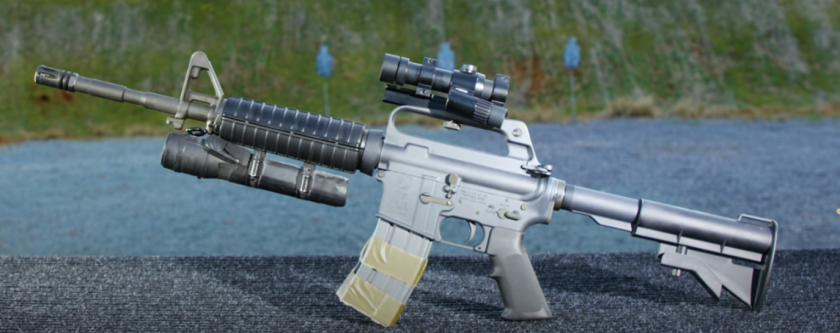
So what’s the big deal? A 14.5″ with a red dot and a light? I have three of those in my safe right now, and a 13.7″, and a Recce Rifle with the latest peepeepoopoo LPVO. This rifle doesn’t even have an ambi controls or a BAD Lever!
Yeah, I get it, just bear with me. The end result is incredibly similar to what we’d now consider a bog-standard M4, but that’s kinda the point.

Modelo Time

In the 1980’s, the most modern service rifle issued to the fighting men of the US military was the Colt and/or FN M16A2 rifle. This rifle featured a 20″ barrel, fixed carry handle rear with updated rear sight, featured semi and burst fire modes, and weighed a little over 8 lbs. The only accessory of note would be the basic two-point sling issued with the rifle.
In 1988, a 25-year old Larry Vickers checked in to the Operator Training Course, one of the newest members of 1st SFOD-D, or “Delta Force”. Vickers was issued a brand new Colt rifle, fresh in the cardboard box , with a cardboard dowel still in the barrel. It, too, had “M16A2″ rollmarked on the lower receiver, but it was… different. This model had a 14.5” barrel with an M203 cut, a two-position collapsing stock, and the old-style M16A1 carry handle. It also featured a safe-semi-auto selector, instead of the A2’s derided burst fire mode. The Colt catalogue referred to this configuration as the “Model 723”; the D-Boys called it “CAR-15”.
This compact M16 sibling was able to bring the majority of the M16’s firepower and accuracy into a smaller footprint, while still maintaining its reliability, something earlier M16-based carbines were not well-known for. The majority of US SOF at the time were using the H&K MP5 submachine gun for CQB/assaulter duties. While the MP5 has been a highly-effective and respected weapon since it was introduced, it is chambered in the 9×19 Parabellum handgun cartridge. This inherently limits its effective range and lethality in a modern conflict zone, where most of the bad guys are likely rolling with AKM variants, H&K G3s, FN FALs, and so on. The CAR-15 bridged the gap between the “musket” and the 9-mil subgun, and Delta was quick to embrace it.
As far as I am aware, the earliest high-profile use of the CAR-15 by Delta Operators was in 1989 during Operation Acid Gambit, in Panama. This mission resulted in the rescue of American intelligence asset Kurt Muse from the Cárcel Modelo prison in Panama City. Shortly after this, in the Desert Shield/Storm days, Delta would find themselves hunting Iraqi SCUD missiles behind enemy lines while carrying these same carbines.
Oddly enough, however the most iconic portrayal of this rifle doesn’t come from the Gulf War, Iraq, WMD hunting or counter-terrorist action.
The Five-Yard Line

On October 3rd, 1993, a humanitarian mission in Somalia punctuated with low-intensity conflict between Coalition forces and local militia members erupted into what is now known as “The Battle Of Mogadishu” to westerners, and “The Day Of The Rangers” to others. As part of the still-ongoing Somali Civil War, this battle featured the most intense close-quarters fighting seen by US Forces since the Vietnam War. The main US troops involved in the fight were the men of the 75th Ranger Regiment, 1st SFOD-D, and the 160th SOAR.
A one-hour snatch and grab turned into an extremely bloody day-long gunfight in the streets of Mogadishu. By the end of the day, 100 Americans had been wounded, 16 were killed in action, and one was taken as a prisoner. The violent firefight and heroic deeds of of the Rangers, Delta, and UN personnel were later documented in the novel Black Hawk Down by journalist Mark Bowden, which was famously adapted into a film of the same name in 2001 by director Ridley Scott.
Reality vs Film

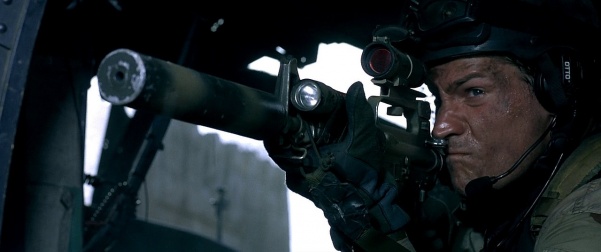
The CAR-15 in actual Delta service at this time was less of a set-in-stone spec, and more of a proof of concept that grew over time. Minor differences have been seen from one issued CAR-15 to another. A good example is the fact that many of them came with standard Government-Profile barrels (with M203 cut) and some came with “pencil” profile barrels. Either of these configurations could be considered to be the same catalogue item, the Model 723. The 723 was considered an “M16A2 Carbine”, but it featured a transitional upper receiver setup between the A1 and A2 we now colloquially refer to as the “C7” upper, first made by Diemaco/Colt Canada. It’s basically an A1 upper with a brass deflector and forward assist.
The optics at the time would usually be either the Aimpoint models 2000 and 3000 which were, at the time, mainly considered “sporting” optics with 1″ tubes and 4 MOA dots. You’ll see a few different weapon light setups from the time. Of most note would be the conversion of the Underwater Kinetics model QXL Scuba Flashlight. These would be modified in-house by Delta armorers and commo dudes to be painted black, covered in black inner tubing, set up with remote switches and affixed to the plastic handguard by hose clamps.
On the other hand, the film armorers used components that were easier to acquire at the time to assemble several screen-ready rifles, but still captured the idea of the CAR-15 authentically. There are, however, a few major differences of note. The film rifles feature A2 uppers, as opposed to the period-correct C7; technically, they would be considered the Colt Model 727. Attached to the upper’s were carry handle Weaver mounts (I’m not sure the make) with Aimpoint Comp M2s. These rifles also featured barrel clamp-mounted Surefire 6P or 660 flashlights, which was the preferred white light after the time of the Modelo-style QXL Scuba Flashlight.
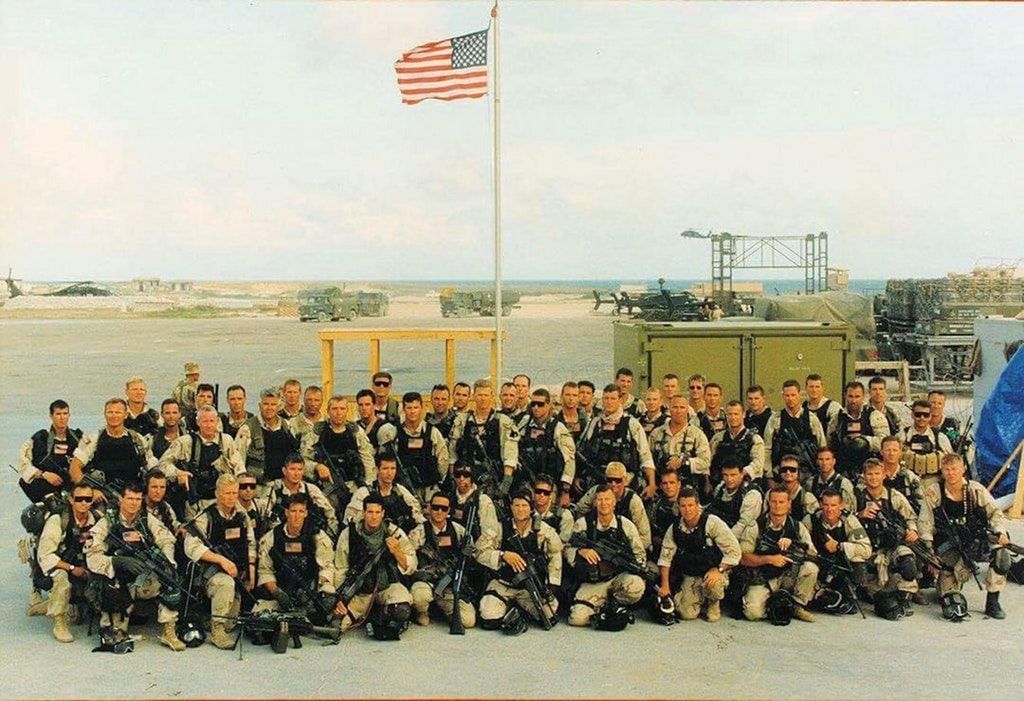
You may have also noticed that the rifles seen on-camera were slightly tweaked and re-used for the film Blood Diamond starring Leonardo DiCaprio. A byproduct of both films sharing the same prop/armorer company, Bapty & Co, these rifles were wielded by the mercenaries seen in film, and for a brief scene at the films climax by Danny Archer. Does it ultimately make that much sense that a bunch of South African mercs in 1999 are rolling the same primary as literally Delta Force? Probably not, but it illustrates that they are well equipped and trained, and for characterization of the group, it fits well enough. It’s still a cool rifle, and it’s got a different paint scheme this time. It kinda makes me wish we got a rifle like this in Far Cry 2 instead of the fucked up not-quite-an-AR we did get.

Cyclical, Like The Terminator
On the initial glance, and even after some use, your impression of this rifle is probably going to be something like “it’s dated”, and “the red dot is really high up there” and you’d be right. However, consider the concepts that drive this build.
The M4 SOPMOD program in the 90’s and 2000’s was a direct evolution of this rifle due to its versatility and overall performance, but with a recognized need for more extensive accessory solutions. The most basic SOPMOD Block I rifles had flat top uppers with Aimpoints mounted lower to the gun to allow co-witnessing iron sights. They also featured the KAC RAS quad-railed handguard for easy accessory management for lights, lasers, and foregrips. The Block II rifles refined this package somewhat with updated optics, improved quad-rail, and other accessories, but the concept was still the same.

Fast forward to now. Micro red dots on 1.93″ mounts with MLOK handguards are among the most popular setups in CQB-oriented rifles. The high mounted red dot allows for a more “heads-up” shooting stance, improving situational awareness and comfort. The slick MLOK handguards replacing quad-rails cut unneeded weight on the front end.
Wait… tall red dot, slick front ends? Haven’t we done this before?


Really makes you think. Turns out we had it mostly figured out 30 years ago. Not to say improvements haven’t been made in the past few decades (this setup would not be quite so nice under NODs as modern solutions) but it is extremely interesting to see these old setups be completely justifiable in the modern age, after going through so many iterations. If I was told right now I had to give up my currently issued patrol rifle, I would not feel any worse off with my CAR-15. It is extremely rare for a “historic” design to also qualify as a practical one.
If you aren’t used to this “heads up” style, it’s gonna feel a little alien learning it on the CAR-15. The FiberLite style stock is very thin, so your cheek/chin weld is gonna have less engagement than say, an LMT SOPMOD stock. Rep it through a bit, and you’ll be back to blastin’ in no time. While you’re rolling this build, I think you’re gonna be surprised at the lightweight nature of this gun. Turns out the AR can be really fuckin’ light, we just need to stop throwing so much shit on them. Or do more pushups, whatever.
To be clear, I’m not advocating that you drop whatever your current primary is and commit to the bit of the CAR-15. I simply suggest that you might be surprised how much a “dated” build like this can hold its own in the current year. At the end of the day, fun things are fun. LARP your heart out.
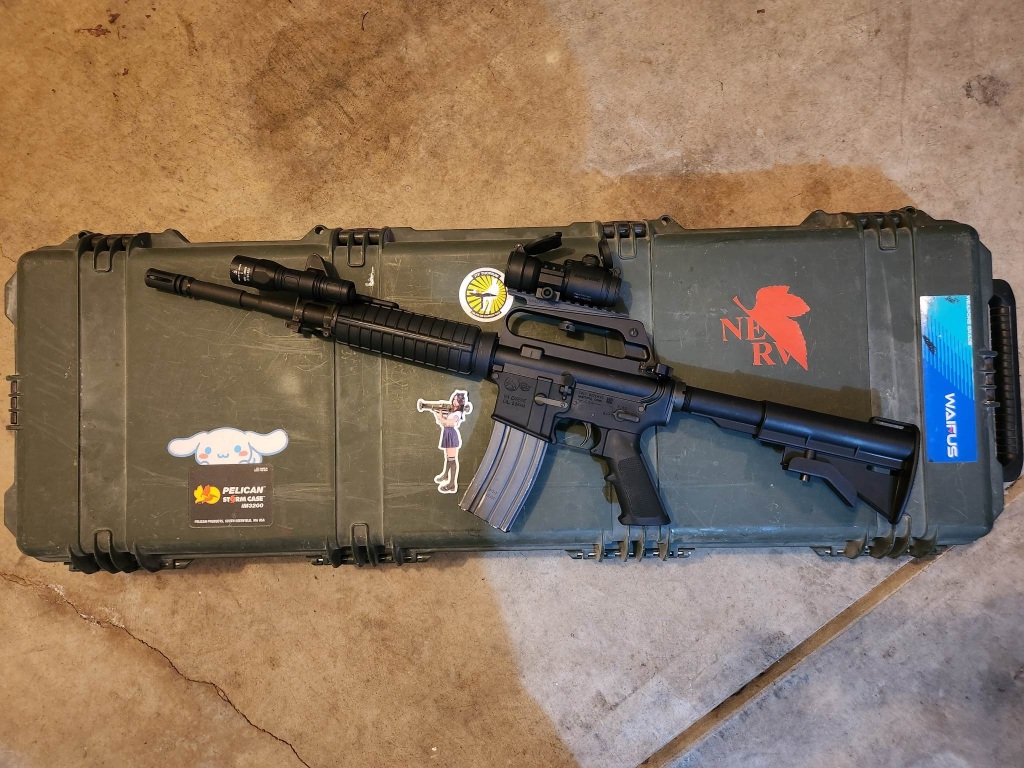
There are many reasons I decided to do this build, and eventually this article. It’s a cool rifle. It’s an effective and simple rifle. It’s a peek into “how dad did it”. With all that being said, it’s important to remember the men responsible for getting this wheel rolling to begin with.
In the words of Larry Vickers:
SOF in general has been a catalyst for improving and reinventing things that were set in stone. SOF legend Major Richard Meadows, the man I consider to be the first Delta Operator, was involved with not only MACV SOG but was a team leader on the Son Tay Prison Raid, arguably one of the most influential SOF missions in history. Delta Force grew from that kind of outside-the-box thinking.
It was the Son Tay Raiders who first fielded a red dot sighted weapon system, and it was Delta who picked up the ball with Aimpoint sighted CAR-15s. Every Soldier, Sailor, Marine and Citizen who uses a tricked out M4 style carbine today owes a debt of gratitude to individuals like Major Meadows, the Son Tay raiders and the Operators of the Delta Force for pushing the limits of the AR style carbine into one the most successful fighting weapons in the history of the US Military.
Larry Vickers, 2013
The CAR-15 is ultimately a product of its time, driven and further developed by the men who wielded it, and the world they operated in. This rifle exemplifies the “get shit done” attitude of the guys who have been there and done that and wanted to do it even better. The knowledge today we take for granted when we build out any AR was gained only through experience, and often paid in blood.
Gothic Serpent was just one footnote on the military history of the United States, and the lessons learned in Somalia, Panama, and earlier in Grenada, Iran, and Vietnam, defined the dawn and growth of what’s now considered standard in special forces operations, and the use of the fighting rifle in general across the globe.
Take a moment to reflect on that knowledge, and know that at the end of the day, the ingenuity and experiences of a few hundred real people is what brought us here. I feel that this rifle is a fitting tribute to those men.
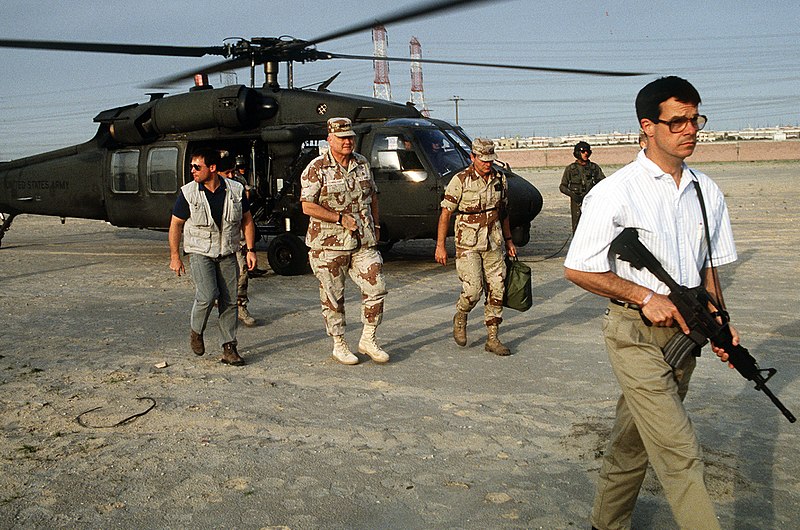
This article grew into something far larger than I initially intended, but it’s gonna be a good thing when it’s all shaken out. You can look forward to my build guide coming soon in Part 2.
Thank you all very much for reading, stay safe, and listen to Calliope Mori’s new album Sinderella on Spotify.
-Duke
Further Reading;
Larry Vickers – The SCUD Hunter Carbine
Larry’s Delta CAR-15
Forgotten Weapons Ft. Larry Vickers Delta Force Colt 723 Carbine

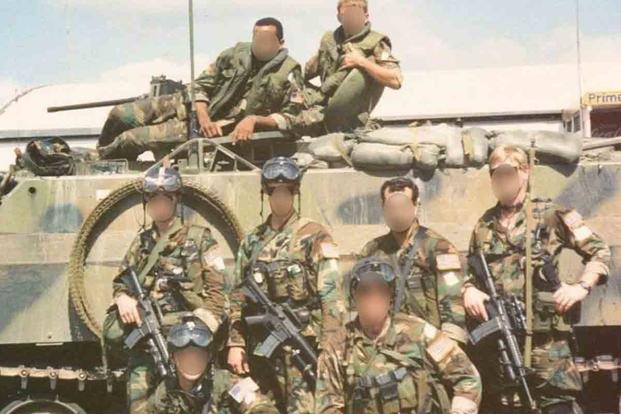
That was very well addressed and documented, thanks a bunch.
LikeLiked by 1 person
Thanks for the read!
LikeLike